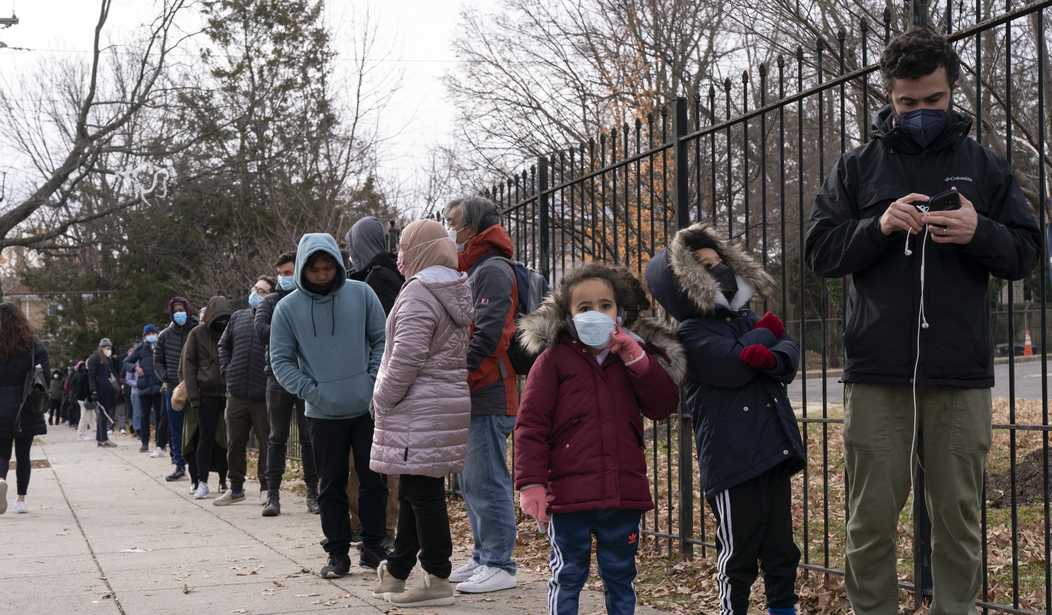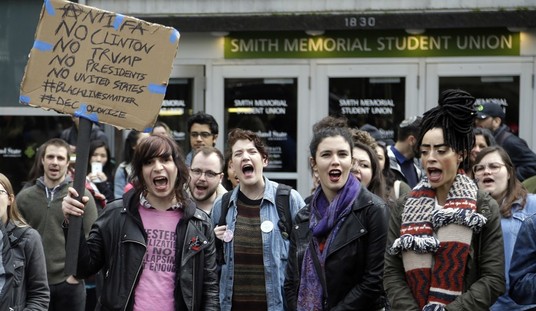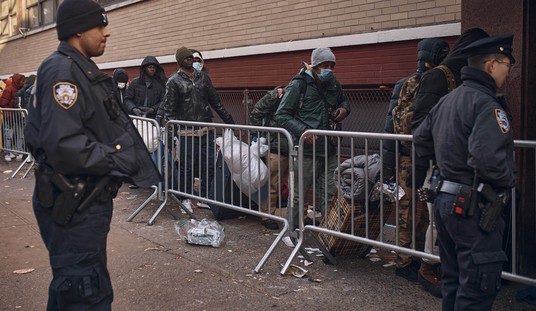Nothing will capture the phenomenal spread of Omicron for you as well as this table of COVID hot spots will.

Note the percentage change in cases over the last two weeks. Normally only small counties are prone to triple-digit surges because of their tiny populations. E.g., a county that rises from five total cases to 10 has seen 100 percent growth.
With Omicron, we’re seeing 500+ percent growth in some of America’s major metropolises. According to one estimate, one in every 50 people in Manhattan caught COVID just within the past week. “The word ‘surge’ is almost insufficient to describe what’s going on in the city; the citywide transmission rate has risen 10x since the start of the month, more in some areas,” notes NBC’s New York affiliate.
Smallpox was before my time but I’d be surprised if NYC has seen an outbreak like this since the days of variola. And maybe not even then.
Nationally the story is the same. The old record for cases in the United States was set on January 11 of this year, the height of the winter wave. The U.S. averaged 251,000 cases that day; the single-day record was set a few days earlier with 300,777. Today’s number of new cases: 380,751. The daily average currently stands north of 267,000 and we’re still on the way up.
And yet, the news isn’t all bad.
We should be careful about drawing firm conclusions from data gathered during Christmas week since the holidays produce a blip in reporting. For instance, the U.S. officially recorded just 58,000 cases on Christmas Day, but on Monday, as local health authorities caught up with their backlog, it reported 543,000. Data on hospitalizations and death may be similarly backlogged, reason for taking those numbers with a grain of salt. And since deaths lag cases by several weeks, any surge in Omicron-caused fatalities might still not have arrived.
But even so, note the incongruous trends in this table:

As a percentage, cases have increased 10 times as much as hospitalizations have and deaths are actually down slightly over the past two weeks. Is that an anomaly due to holiday reporting? A red herring, with Omicron deaths still on the way? Or early evidence that Omicron really is driving Delta out of the population and replacing it with a milder illness?
Compare the curves for hospitalizations and deaths this week to the curves last winter:

The U.S. reached peak hospitalizations on January 10, one day before it reached peak cases. It had already neared peak deaths by January 14, three days after it reached peak cases, before finally attaining the peak on January 26. If the past is precedent, we should be seeing an enormous surge in hospitalizations and deaths at the moment that tracks the skyrocketing cases we’re experiencing from Omicron. We aren’t. And as Jazz noted earlier, it’s anyone’s guess how many hospitalizations being recorded are actually “incidental,” involving people landing in the ER for health problems unrelated to COVID and testing positive upon admission. That was happening in South Africa during its Omicron wave earlier this month and it’s already happening here with children:
But even as experts expressed concern about a marked jump in hospitalizations — an increase more than double that among adults — doctors and researchers said they were not seeing evidence that Omicron was more threatening to children.
In fact, preliminary data suggests that compared with the Delta variant, Omicron appears to be causing milder illness in children, similar to early findings for adults…
Some hospitals around the country have reported positivity rates as high as 20 percent among children. But the vast majority were asymptomatic and arrived at the hospital with other health problems, officials say.
Hospital admissions for adults are rising fast in NYC, ground zero for America’s Omicron outbreak, but note the divergence between all hospitalizations for COVID (or with COVID?) and those that require ICU care:
Hospitalizations are rising extremely fast in NYC. On track to pass last winter’s peak in a matter of days.
This is happening at a time when the healthcare workforce is depleted and exhausted and many are themselves out with covid.
We have to do more to slow this. pic.twitter.com/eR4e1IiRLk
— Mark D. Levine (@MarkLevineNYC) December 29, 2021
It’s also anyone’s guess how many of those ICU patients were infected with Delta rather than Omicron. The more dangerous variant might be supplanted by the less dangerous one eventually but it’s still around for the moment.
There’s one more reason for optimism. Again, bearing in mind that holidays produce reporting anomalies, there’s some evidence that London may have already reached its peak:
Omicron's a scary thing. It moves fast.
To avoid a lot of human suffering, you need two things that happened in South Africa to also happen everywhere else:
1) It has to give milder outcomes than Delta.
2) It has to flash up and down really fast.
Results so far in London:
(1/n) pic.twitter.com/UVQxG2WpCG— Paul Mainwood (@PaulMainwood) December 28, 2021
Also, even within these hospitalisations; it looks (again, taking care on lags and reporting) as though the share of patients needing mechanical ventilation is much lower.
Exactly as the Gauteng doctors said; we might reflect how and why their observations were dismissed.
(3/n) pic.twitter.com/9DGPtbRXlg— Paul Mainwood (@PaulMainwood) December 28, 2021
Notably, cases there appear to have topped out on December 21 and then fallen over the following two days — before any reporting problem from Christmas would be expected. Maybe that’s an artifact of fewer Londoners choosing to get tested on those days, either because they had holiday plans instead or because they feared that a positive test would derail their holiday plans. But it’s possible that London is following Gauteng province in South Africa by seeing an explosive rise in cases followed by a similarly steep fall. If so, Omicron might be in retreat here by the end of January. If not sooner.








Join the conversation as a VIP Member